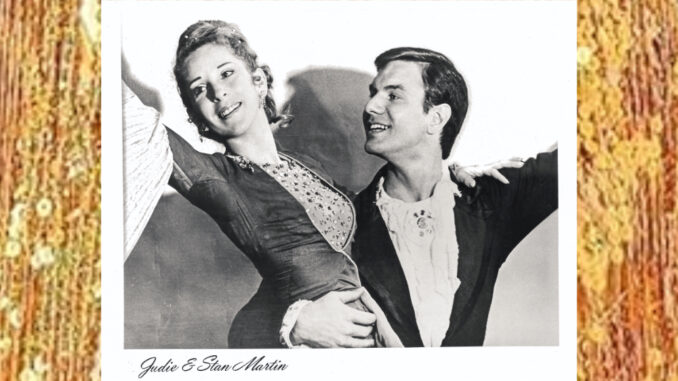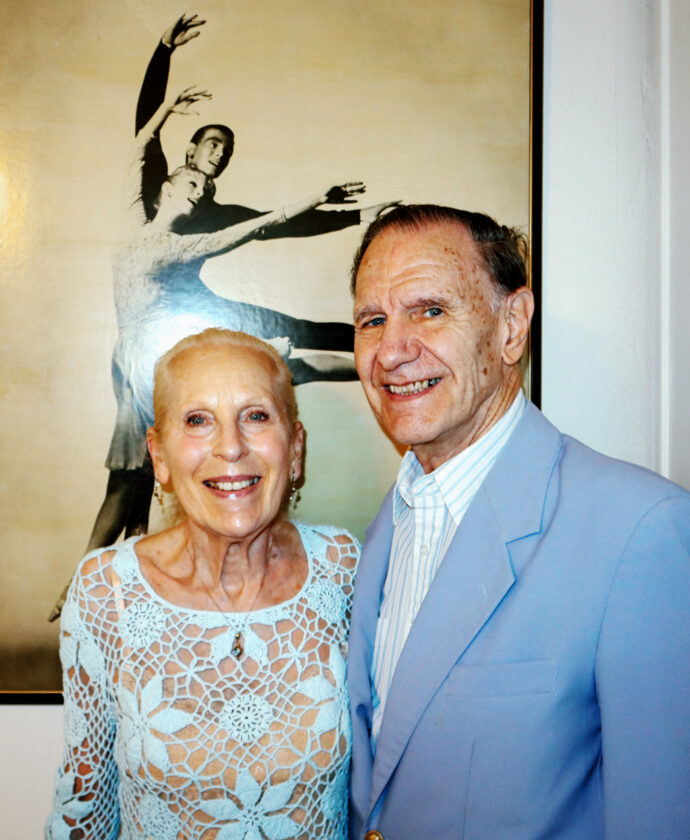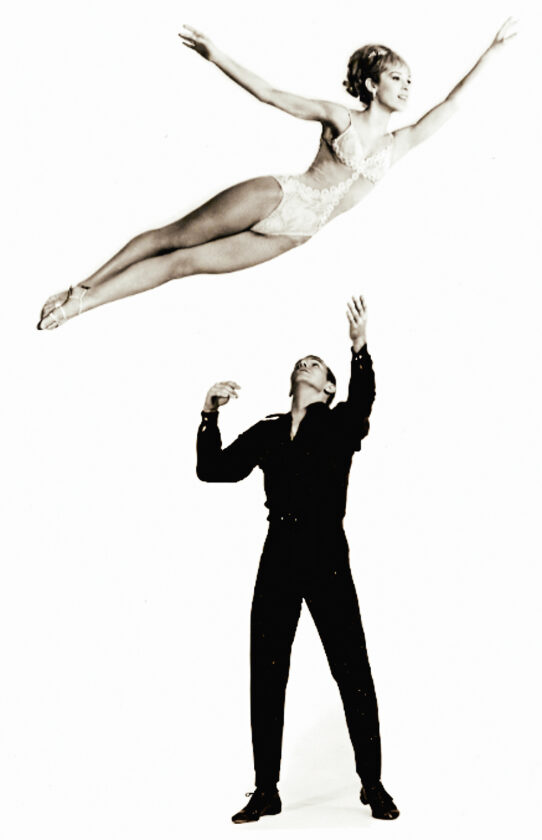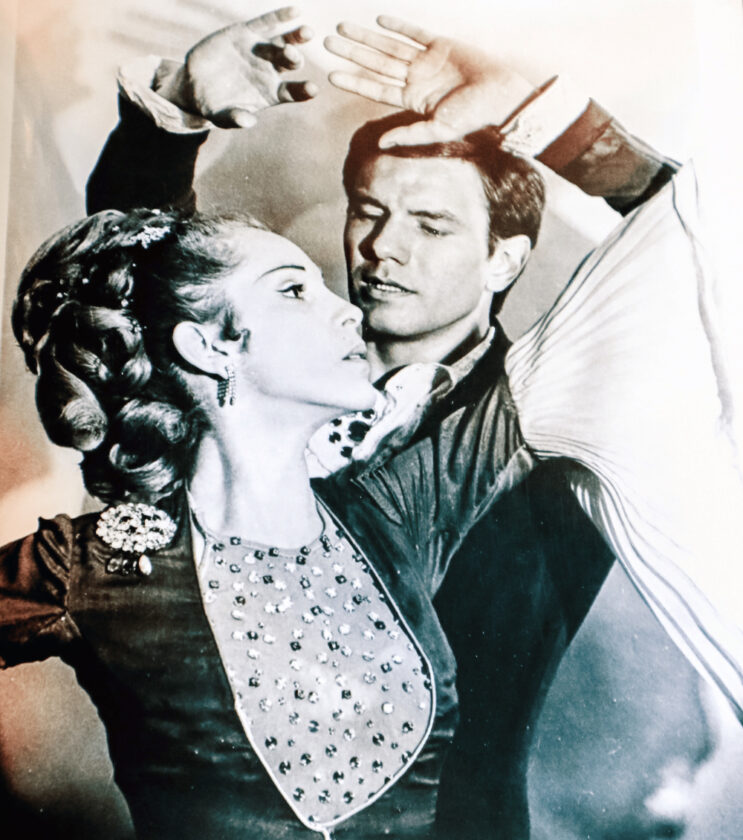
ENGLEWOOD—Judie and Stan Martin of Englewood are world-renowned dancers who performed together for more than 25 years. From Asia, Europe, Central America, South America, Canada, and the Caribbean to major American venues such as Radio City Music Hall, Carnegie Hall, and the International Hotel in Las Vegas, they opened shows for some of the biggest stars, including Pearl Bailey, Ella Fitzgerald, Vic Damone, Jerry Lewis, Diahann Carroll, and Tony Martin, to name a few.

The couple also hosted four dance parties every week in New York City—two where they taught ballroom dancing and two focused on Argentine tango. Stan still teaches several times a week in New York City and Queens.
I recently spoke with Judie and Stan about their remarkable career.
Hillary Viders: How did each of you begin dancing?
Stan Martin: I began as an actor. My first Broadway show, Seeds in the Wind, was at age 7, the minimum age to join Equity. When I was 16, my mother took me to Dale’s Dance Studio, where she had been taking classes, and offered me a lesson. I enjoyed it so much that my mother signed me up for a course of five lessons. From there, I decided I wanted to be a teacher. I saw an ad for Fred Astaire Dance Studios: “We train you for free.” So, I began teaching there.
Judie Martin: I can’t remember a time when I didn’t want to dance. I was about 4 years old, and there was a picture on the cover of Life magazine of a ballerina’s legs on pointe. I said, “That’s what I want to do!” I took my first ballet lesson, and from then on, it took over my life. I gave up everything else in my childhood because I wanted to become a ballerina.
HV: How did the two of you meet?
Stan: When I was teaching at Fred Astaire’s, I came back from lunch one day, and there was this gorgeous blonde student sitting there, so I asked her for a dance.
Judie: As a teenager, I had seen Marge and Gower Champion, and Fred Astaire and Ginger Rogers, famous ballroom teams. Once Stan and I started dating, he had to leave the studio because of a rule forbidding teachers from dating students. The more we fell in love, the more we wanted to combine ballroom and ballet. So, we became a professional Adagio dance team, earning our living doing it.
Stan: When I met Judie, she was at a professional level of ballet, taking the same classes as all the big stars of ballet at that time, like Rudolf Nureyev and Margot Fonteyn.
When we began doing shows together, we created innovative routines with lifts, and people went crazy. What we did was inspired by the Bolshoi Ballet in Russia—Bolshoi means “big.” We did big lifts, overheads, spins, and high aerial moves. At one point, we asked ourselves, Do we want to be acrobats or dancers? We decided to be dancers.

HV: How did you transition from performing to teaching?
Stan: Back when I was working at Fred Astaire Studios, two of my students asked me for lessons at the Roosevelt Grill, dancing to Guy Lombardo. I agreed, and soon the group grew in size, so I hired another teacher to help. We continued to dance at several different hotels in New York City and around the world.
HV: Stan, you’ve worked with students from ages 4 to their 90s. What do you enjoy most about teaching?
Stan: I love working with students. It’s so rewarding because it’s like starting a journey together and working toward our goal.
HV: Was there a lot of competition between you and other dance teams?
Stan: Never. Competition is something that is measured or timed. Dance is an art.
Judie: The only “competition” in dance is who gets the job.
HV: How logistically and physically demanding were your Adagio routines?
Stan: Unlike a company where dancers’ responsibility is only to dance, we were responsible for everything. We carried our own music, written especially for our act, lighting cues, designed our wardrobe, and made our own travel arrangements. Most importantly, other than when we performed at Radio City Music Hall, we never had understudies.
Judie: That meant any injury or illness that happened to us—broken bones, flu, “tourista,” etc.—was our injury, and we had to compensate for it. There were times when we performed at high altitudes, like on live television in Mexico City, where we could hardly breathe and were grateful just to be standing at the end of the act.
HV: How difficult was it being together 24 hours a day?
Judie: Working together puts a strain on your marriage, and being married doesn’t really enhance the work because you have to divorce your emotions from what you are doing. But we felt blessed to be together.
We chose a difficult career. It is human nature to blame someone else when something goes wrong, especially under physical exertion. That happens in all facets of life. Resolving those instances in Adagio only served to strengthen both our marriage and our dance act. We were known as “the dance team that doesn’t fight!”
HV: What’s your secret to a long and happy marriage?
Stan: Two words: Yes, dear!

